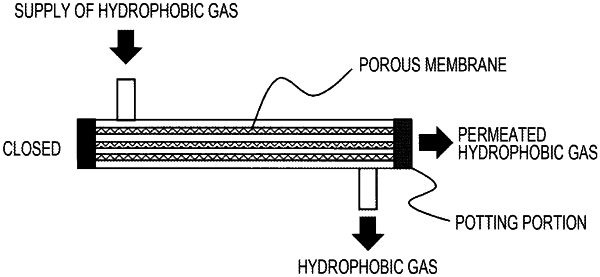| CPC B01D 65/06 (2013.01) [B01D 61/10 (2013.01); B01D 61/14 (2013.01); B01D 63/02 (2013.01); B01D 69/00 (2013.01); B01D 71/34 (2013.01)] | 16 Claims |

|
1. A method of filtering an oil, the method comprising the following steps (A) and (B):
(A) allowing a hydrophobic gas to permeate through a composite porous membrane comprising a hydrophobic polymer as a main component; and
(B) allowing an oil to permeate through the composite porous membrane,
wherein the step (B) is performed after the hydrophobic gas that has permeated through the composite porous membrane is confirmed to have a relative humidity of 0 to 60% in the step (A), and
wherein the composite porous membrane has an α-face and a β-face, and after the step (A) and before the step (B), the composite porous membrane has a contact angle with respect to water of 65° to 130° and satisfies the following Expression 1, and the hydrophobic gas is allowed to permeate through the composite porous membrane from the α-face of the composite porous membrane in the step (A), and the oil is allowed to permeate through the composite porous membrane from the β-face of the composite porous membrane in the step (B)
(α-face)−(β-face)≥10° Expression 1.
|